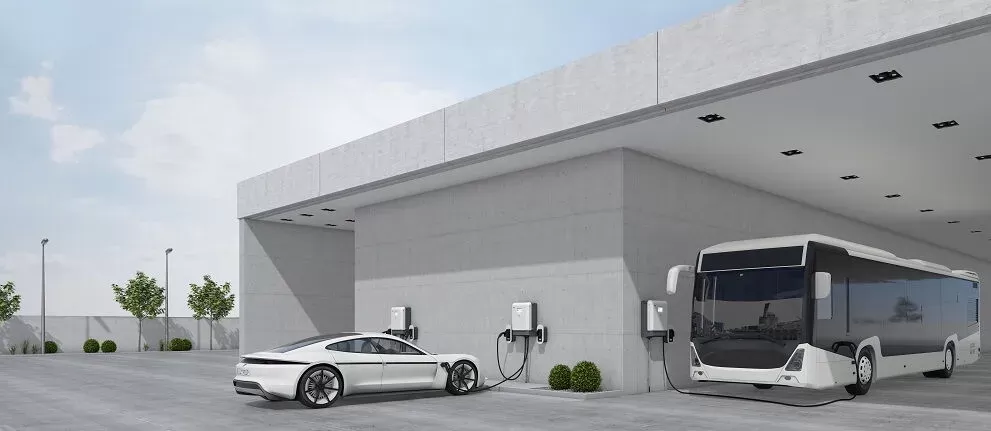Notifications

11 minutes, 9 seconds
-160 Views 0 Comments 0 Likes 0 Reviews

As a professional EV charger manufacturer in China, Topper Company delivers dependable electric vehicle charging station equipment and comprehensive charging solutions.As electric vehicles (EVs) gain momentum, the need for faster, more efficient charging solutions has grown significantly. One of the latest innovations in EV charging technology is the DC Wallbox charger, a compact and powerful solution designed to meet the needs of individual EV owners and businesses alike. But what exactly is a DC Wallbox charger, and how does it differ from traditional AC chargers? This article explores the workings, benefits, and applications of DC Wallbox charging, providing a comprehensive overview of this cutting-edge technology.
A DC Wallbox EV charger is a wall-mounted, direct current (DC) fast charger designed for electric vehicles. Unlike alternating current (AC) chargers, which require the vehicle’s onboard charger to convert AC power into DC power for the battery, DC Wallbox chargers bypass this step. Instead, they deliver DC power directly to the vehicle's battery, drastically reducing charging times. This makes DC Wallbox chargers an ideal choice for EV owners who need quick charging solutions or businesses aiming to provide efficient charging services to their customers.
DC Wallbox chargers are especially suitable for locations where space is limited, but high-power charging is essential. Their compact design and advanced features make them versatile for homes, workplaces, and public charging stations.
The operation of a DC Wallbox charger involves several key steps, ensuring fast, safe, and efficient charging. Here’s a breakdown of how these chargers work:
The primary function of a DC Wallbox charger is to convert alternating current (AC) from the power grid into direct current (DC), which is required by an EV’s battery. Unlike AC chargers, which rely on the vehicle’s onboard charger for this conversion, DC Wallbox chargers perform this process internally. This allows them to deliver power directly to the battery, bypassing the vehicle’s onboard systems and enabling faster charging.
Before charging begins, the DC Wallbox charger communicates with the vehicle’s Battery Management System (BMS). This ensures that the charger delivers the right amount of power based on the battery’s state of charge, temperature, and capacity. The charger and vehicle typically communicate using standardized protocols such as CCS (Combined Charging System) or CHAdeMO, both widely adopted in the EV industry.
Once the charger and vehicle establish communication, the DC Wallbox charger adjusts its power output to match the battery’s needs. This dynamic power delivery ensures that the battery charges as quickly as possible without compromising safety or longevity. For instance, the charger may deliver higher power when the battery is nearly empty and gradually reduce the power as the battery nears full capacity.
Safety is paramount in DC Wallbox charging. These chargers are equipped with advanced monitoring systems that track key parameters like voltage, current, and temperature. If any issues arise, the charger can automatically adjust its output or stop charging altogether to protect both the vehicle and the charging equipment.
DC Wallbox chargers offer several significant advantages over traditional AC chargers, making them an attractive option for various users. Here are some of the key benefits:
One of the standout advantages of DC Wallbox chargers is their ability to drastically reduce charging times. By delivering power directly to the battery, these chargers achieve speeds up to 75% faster than AC chargers. This is particularly beneficial for EV owners who need to recharge their vehicles quickly.
DC Wallbox chargers come with advanced load balancing capabilities that prevent grid overload and ensure efficient energy use. This is especially important in environments where multiple chargers are used simultaneously, like public charging stations or workplace hubs. By intelligently distributing power, these chargers optimize energy consumption and minimize the risk of power outages.
Many DC Wallbox chargers support bi-directional charging, also known as Vehicle-to-Home (V2H) functionality. This feature allows the EV’s battery to act as a backup power source for the home or building during power outages or peak demand periods. By storing energy in the vehicle’s battery and releasing it when needed, users can reduce their reliance on the grid and lower their energy costs.
Despite their high power output, DC Wallbox chargers are designed to be compact and space-efficient. Modern units are about 30% smaller than first-generation models, making them easier to install in a range of settings. This compact design is especially advantageous in urban environments or places with limited space.
To fully appreciate the benefits of DC Wallbox chargers, it’s important to compare them with onboard chargers (OBCs), which are commonly found in electric vehicles. Here’s a closer look at the key differences:
An onboard charger is an integral part of an electric vehicle that converts AC power from the grid into DC power for the battery. It’s typically designed to handle a 220V AC input and convert it to high-voltage DC suitable for the vehicle's battery. In contrast, a DC Wallbox charger performs the conversion externally, delivering DC power directly to the battery without depending on the vehicle’s onboard systems.
Because DC Wallbox chargers bypass the vehicle’s onboard charger, they can deliver power to the battery much faster than AC chargers. This makes them ideal for situations where quick charging is critical, such as long-distance travel or commercial charging stations.
Both onboard chargers and DC Wallbox chargers include safety mechanisms to protect the vehicle and charging equipment. However, DC Wallbox chargers often feature additional monitoring systems that provide real-time data on voltage, current, and temperature, ensuring a safer and more reliable charging experience.
While onboard chargers are limited by the vehicle’s design and capabilities, DC Wallbox chargers offer greater flexibility in terms of power output and compatibility. This makes them a more versatile option for users with multiple EVs or those planning to upgrade their vehicles.
DC Wallbox chargers are ideal for a wide range of applications, from residential use to commercial and public settings. Here are some common use cases:
Homeowners who want to reduce charging times and benefit from bi-directional charging will find DC Wallbox chargers an excellent choice. Their compact design makes them easy to install in garages or driveways, while their high power output ensures fast and efficient charging.
Many businesses now offer EV charging stations to attract and retain employees who drive electric vehicles. DC Wallbox chargers are particularly well-suited for this, as they can accommodate multiple vehicles and provide fast charging during work hours.
Public charging stations, like those at shopping centers, parking lots, and highway rest stops, often require high-power chargers to service a large number of vehicles. DC Wallbox chargers are perfect for these locations, offering fast charging speeds and advanced power management.
Companies that operate electric vehicle fleets—such as delivery services or ride-sharing platforms—can benefit from the efficiency and reliability of DC Wallbox chargers. These chargers reduce downtime and keep vehicles on the road longer.
DC Wallbox charging is a groundbreaking advancement in EV charging technology, offering faster charging times, greater efficiency, and increased flexibility compared to traditional AC chargers. Whether you’re an EV owner looking to enhance your home charging setup or a business aiming to provide reliable charging solutions, DC Wallbox chargers offer powerful and versatile options. As electric vehicles continue to grow in popularity, innovations like DC Wallbox charging will play a critical role in shaping the future of transportation and energy use.Know more about Google SEO Directory
China EV Chargers EV Charger Manufacturer EV Charging Solutions

